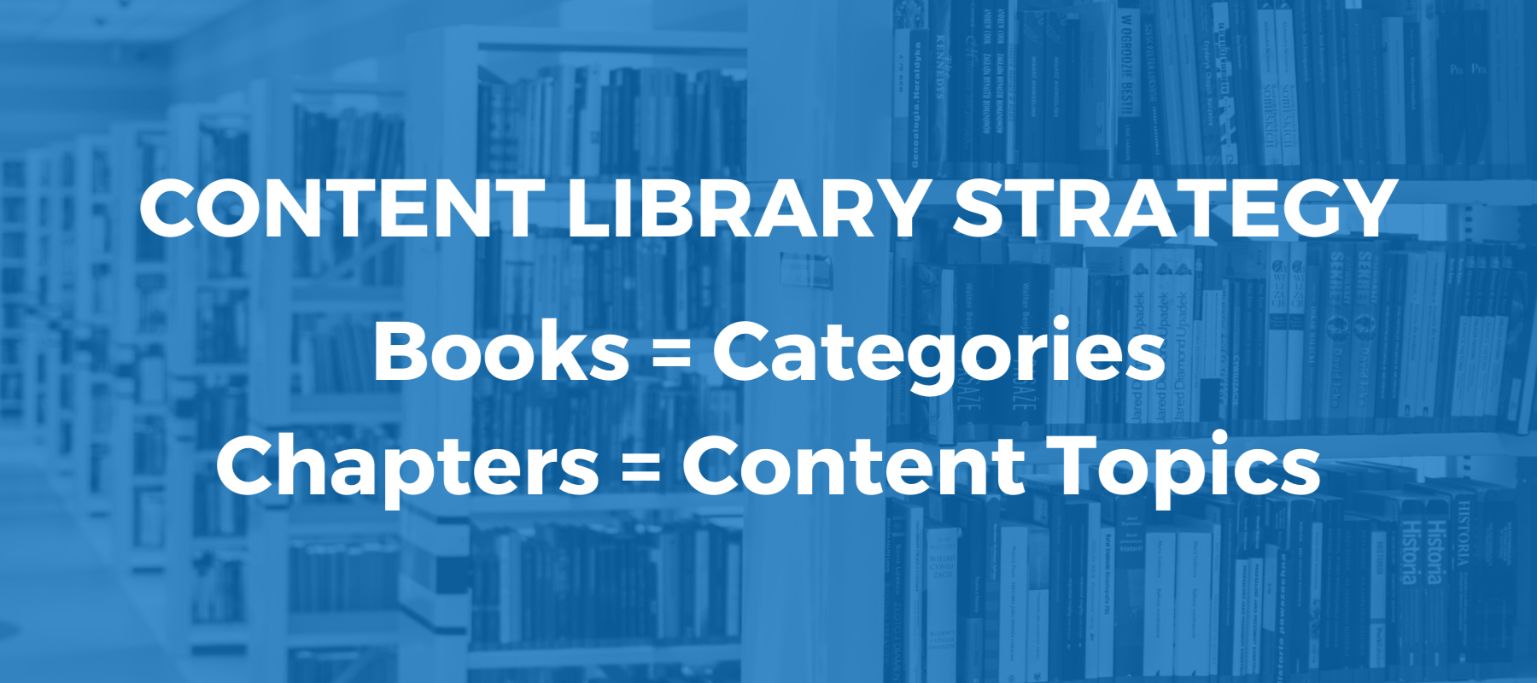Effective content marketing can answer questions your audience never knew they wanted answered. It transforms your subject matter expertise into a digestible, ready-to-read format that prospects or customers can peruse at their leisure. The key is to create the right content for your organization and audience, whether that’s blogs, case studies, videos, infographics, or something else entirely.
Sometimes when people hear content marketing, they think it equates to churning out a blog every week just to get content out in the world. However, Sapphire prefers quality over quantity and takes the library approach to content.
How to Develop a Content Library
Think of your content as a library. Rows on rows of valuable information waiting to be interacted with and put to good use.

As you trail your fingers along the spines, you note the category of each book, representing the broad scope of your organization’s expertise. For example, Sapphire’s “books” are titled Content, Design, Email, Marketing Automation, Web Optimization, SEO, etc.
Inside each book are the various content topics (represented by chapters in our analogy). This is where you’ll dive into specifics of the topic that provide useful information to prospects and clients.
We recommend creating quarterly content calendars, using your content library and audience interests as your guide. If you’re not sure where to start, think about your end-reader first. What questions do your current clients have about your industry? What information do they find useful?
“Creating consistent, tailored content builds trust with your audience,” says Rachel Gillespie, Sapphire’s Content & Marketing Strategist. “With each article relevant to them, a current or prospective client views your brand as credible and valuable. You establish a rapport with people without ever meeting them in person. Of course, you’re promoting your business, but create content that aims to help people first and sell your brand second.”
At some point, you’re going to run out of books and chapters, and that’s ok.
If you’ve identified all the books and chapters in your content library and created content for al those, it’s time to make your content more effective over time.

Give the People What They Want
Discover which content pieces are the most popular and use them again. Don’t worry, it’s not cheating! 90% of your website traffic will mostly come from only 10% of your site—your most popular pages and posts. They are popular for a reason.
The content on these blogs is engaging readers currently so it makes sense that it will continue to capture the attention of new readers. Depending on the content, think about updating and republishing on a quarterly, yearly, or semi-annual basis.
This doesn’t mean just posting the same text year after year. If it’s a popular topic, then there’s likely new information you can add to ensure that the piece is timely and relevant to your audience. Updating and republishing content can also help with your search engine optimization (SEO). Updated content pings Google to reindex your page, which will hopefully positively impact your keyword rankings and searchability.

Repurpose, Repurpose, Repurpose
Don’t waste any content. We know we’re mixing our metaphors here, but use every part of the buffalo. Take well-performing content and transform it into different formats. Turn a podcast into a video, write a blog post that includes statistics from an infographic, aggregate content from a blog series into a downloadable book.
For example, with our client, BakeSmart we created a 29-page ebook that contained some information from existing blog content and some brand new content. Then we repurposed content from that guide to create numerous other pieces of content, including:
- Custom bakery tip graphics
- Five additional blogs posts
- Abbreviated e-guides
- Custom testimonial graphics
- Social media posts
- Downloadables
For those that want an in-depth understanding of a topic, a long-form blog post can be helpful, such as this one we created for netlogx. We’re currently creating these long-form blog posts for each of the netlogx’ services and then repurpose them into other formats as mentioned above.
Just know that it’s not as simple as copying and pasting text from one thing to another. Each format has nuanced best practices and will require altered, streamlined, or additional content.
These content pieces should also include elements of design where appropriate. Statistics on a colored background does not make it an infographic. This example we created for SmartFile demonstrates a good mix of text and statistics while telling an overall story (if we do say so ourselves).
Sapphire Strategy can help you create multiple types of content that amplify your brand’s awareness and credibility. Every content piece is supported by researched statistics and data, along with a corresponding visual element. The end result is a robust digital library that strategically answers questions, educates clients and potential customers, and provides value for readers.
